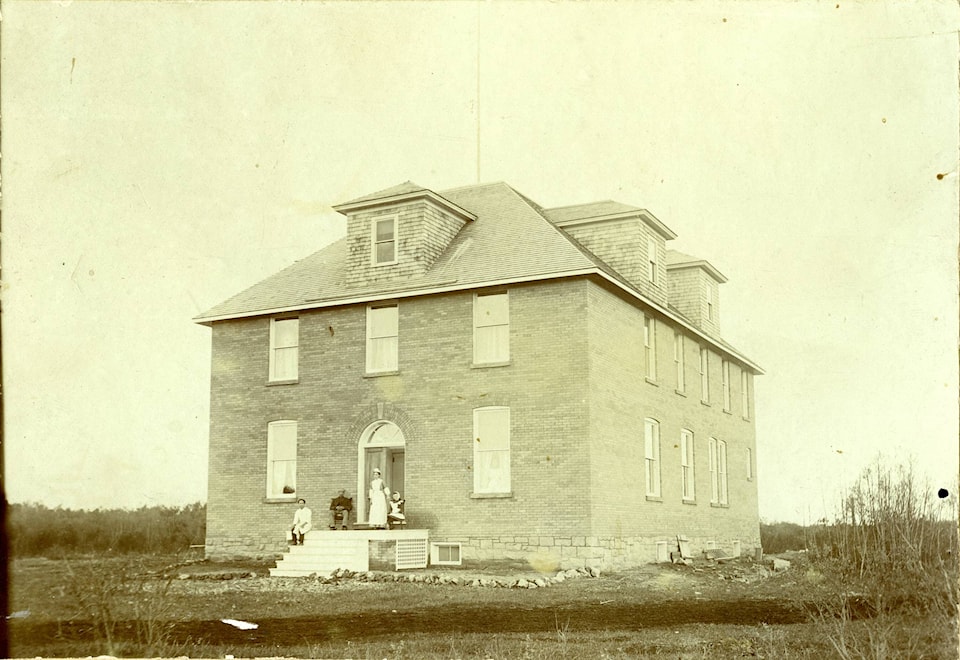With the ongoing COVID-19 pandemic, there is a lot of discussion about highly contagious diseases and the best way to deal with them.
While some people may think this is a new issue, much of Red Deer and central Alberta’s history included outbreaks of serious contagious diseases.
One lasting threat to health over the decades was typhoid fever. Typhoid is a bacteria-based disease, akin to salmonella. It is generally caused by consumption or contact with unclean water, milk and/or food.
It is not surprising that it was a widespread, sometimes fatal affliction in early Red Deer. Wells were often shallow. Toilets were outdoor pits. Milk and dairy products were frequently unpasteurized.
Basic hygiene rules in the handling of food and beverages were all too often not followed.
Hence, typhoid fever was quite common. The very first patient at the Red Deer Hospital was W.N. Snider, who was suffering from typhoid. While he seemed to get better and was sent home, he had a relapse and passed away.
In a number of years, the leading cause of hospitalization in Red Deer was typhoid fever. Although the facility was small, with a mere three dozen beds, in 1910, there were 26 typhoid patients in the hospital at one time.
Unsanitary conditions at local railroad construction camps were blamed for the widespread outbreak. In 1912, nurse Helen McKinnon passed away from typhoid that she had contracted from patients she was treating.
Meanwhile, outbreaks of typhoid were a major problem in wartime. During the Boer War, the British Imperial Army lost more men to typhoid than to battle.
In June 1900, Archibald McNicoll became the first local man to lose his life in the war when he died of enteric (typhoid) fever. He was one of three local soldiers in whose memory the Red Deer Hospital was originally built in 1904.
The overseas conditions of the First World War were horrific. One would have expected large losses of life due to typhoid.
However, the British and Canadian military had learned by now to use widespread inoculations as a preventative measure. Hence, the number of casualties due to typhoid were much lower than in the Boer War.
There were also far fewer cases than suffered by the German army, which did not adopt widespread inoculation programs.
Nevertheless, in the summer of 1916, there was an outbreak of typhoid fever at the military training camp, which had been established at the Red Deer Fairgrounds.
Sgt. W.H. Addinell was one who died from the illness. An inspection of the camp water wells showed that they were in bad shape.
There had also often been problems with sewage backing up under the sergeants’ dining hall. The medical officer of health had the wells disinfected with lime chloride and the military had all the soldiers in camp inoculated.
However, losing the military training facility would be a big economic blow to Red Deer. Hence, a detective was hired by city council to further investigate.
He reported that since the officers had come down with a strain of typhoid not usually seen in the area, it was his expert opinion that an enemy agent had placed the germs into the men’s food.
The military still pulled the training camp out of Red Deer and moved the men to Calgary.
While improved local hygiene and other measures reduced the incidence of typhoid in Red Deer in the 1920s, it was still a troubling issue at the end of the decade.
Consequently, Red Deer was chosen to be one of the first two health units in Alberta in 1931. One of the justifications for the creation of this novel approach to public preventative health was that it would help to further reduce instances of typhoid and other highly communicable diseases in the community.
In 1933, Red Deer added a chlorinator to the water treatment plant, partly on the recommendation of the local health unit.
Fortunately, cases of typhoid fever are very rare now and often involve someone who was infected elsewhere, rather than in the local community.
Red Deer historian Michael Dawe’s column appears Wednesdays.
